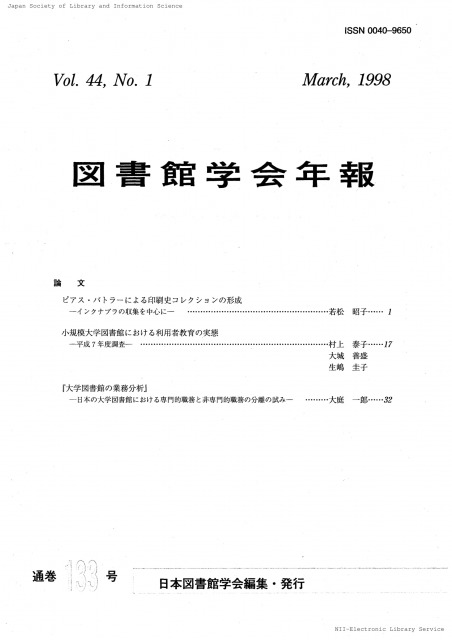Volume 30, Issue 2
Displaying 1-14 of 14 articles from this issue
- |<
- <
- 1
- >
- >|
-
1984Volume 30Issue 2 Pages 49-62
Published: 1984
Released on J-STAGE: October 07, 2022
Download PDF (2177K) -
1984Volume 30Issue 2 Pages 63-70
Published: 1984
Released on J-STAGE: October 07, 2022
Download PDF (1174K)
-
1984Volume 30Issue 2 Pages 71-80
Published: 1984
Released on J-STAGE: October 07, 2022
Download PDF (1079K)
-
1984Volume 30Issue 2 Pages 81-84
Published: 1984
Released on J-STAGE: October 07, 2022
Download PDF (481K) -
1984Volume 30Issue 2 Pages 85-88
Published: 1984
Released on J-STAGE: October 07, 2022
Download PDF (561K)
-
1984Volume 30Issue 2 Pages 89-90
Published: 1984
Released on J-STAGE: October 07, 2022
Download PDF (294K)
-
1984Volume 30Issue 2 Pages 91
Published: 1984
Released on J-STAGE: October 07, 2022
Download PDF (149K) -
1984Volume 30Issue 2 Pages 92
Published: 1984
Released on J-STAGE: October 07, 2022
Download PDF (100K) -
1984Volume 30Issue 2 Pages 93
Published: 1984
Released on J-STAGE: October 07, 2022
Download PDF (154K)
-
1984Volume 30Issue 2 Pages 62
Published: 1984
Released on J-STAGE: October 07, 2022
Download PDF (150K) -
1984Volume 30Issue 2 Pages 94
Published: 1984
Released on J-STAGE: October 07, 2022
Download PDF (115K) -
1984Volume 30Issue 2 Pages 96
Published: 1984
Released on J-STAGE: October 07, 2022
Download PDF (153K)
-
1984Volume 30Issue 2 Pages 70
Published: 1984
Released on J-STAGE: October 07, 2022
Download PDF (118K)
Summary
-
Article type: Summary
1984Volume 30Issue 2 Pages 95-96
Published: 1984
Released on J-STAGE: October 07, 2022
Download PDF (259K)
- |<
- <
- 1
- >
- >|
